What I Learned in Puerto Rico
Hurricane’s damage still felt. Yet tourists find incredible natural beauty, great hotels, food.
Late in January, I had the chance to teach a class under a 700-year old Guayacan tree in a tropical dry forest in Puerto Rico. With a colleague from the English department, we had taken a group of students to the island for an ecological and cultural writing tour as part of the college’s January-term of study. Students practiced and learned the conventions of creative writing as we traveled across tropical rain forests, tropical dry forests, and mangrove forests, learning about these three distinct ecosystems.
Our trip happened against the backdrop of an island still recovering from Hurricane Maria, a category 5 storm that ravaged Puerto Rico late in 2017. Knocking out power for 95% of the island, Maria left millions without electricity and fresh water for months. Many factories closed or halted the production of goods, leading to shortages in supplies, reductions in revenue, and loss of work. Tourism slowed. All told, estimates range from $50 billion to $150 billion in economic losses to the island.
A significant byproduct of the economic strain is the environment. Without revenue generated by manufacturing and tourism, Puerto Rico has not been able to invest in repairing damage to the environment. According to researchers from the National Science Foundation, this damage includes the increased presence of nitrates in streams and enormous numbers of dead and injured trees. Ultimately, certain species—both the trees themselves and those animals that make their homes there—could be lost.
But while the loss of certain individual species may only appear to affect those scientists who study them, there is indeed a greater impact to be felt. As species dwindle, the impact accumulates: ecosystems become less stable; nutrients imbalanced. A ripple effect occurs, and damage escalates. In science, we call this a trophic cascade: as one level of the food chain is disrupted, each subsequent level suffers. Ultimately, those of us at the top of the food chain pay the price of this disruption.
Take fishing as an example. As an influx of nutrients, such as nitrates, enters the rivers and oceans, organisms like plankton increase. Superficially this may sound great, but these short-lived organisms die off and decompose which removes dissolved oxygen from the environment. The lack of dissolved oxygen kills off the smaller fish in these ecosystems, which leads to more decomposition and even lower levels of dissolved oxygen. Ultimately these areas turn into dead zones, or regions that are so low in dissolved oxygen that aquatic organisms can’t live there anymore. Ultimately, this impacts the larger predators, most of the fish we go after for sport, like bass and tuna. Multiply this by hundreds of species across this island’s seven ecosystems and you can imagine the impact.
Many will question what or what more can be done. FEMA has invested substantial resources in Puerto Rico post-Maria. And yet, the island suffers still. Tourism can help. Puerto Rico relies on tourism to fuel other industries. When we visited the island in January, we experienced incredible natural beauty, great hotels and restaurants, warm and welcoming people, and an island open for business. I encourage anyone interested in a week away in a tropical paradise to consider Puerto Rico. As you enjoy the surrounding environment, you will also support its revitalization.
Angela Dassow is an assistant professor of biology at Carthage College.
Op-Ed
-
Unlocking Milwaukee’s Potential Through Smart Zoning Reform
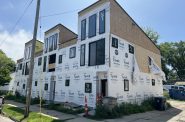 Jul 5th, 2024 by Ariam Kesete
Jul 5th, 2024 by Ariam Kesete
-
We Energies’ Natural Gas Plans Are A Mistake
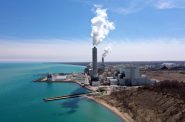 Jun 28th, 2024 by John Imes
Jun 28th, 2024 by John Imes
-
Milwaukee Needs New Kind of School Board
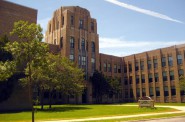 Jun 26th, 2024 by Jordan Morales
Jun 26th, 2024 by Jordan Morales




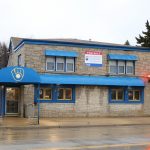
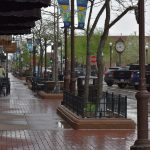
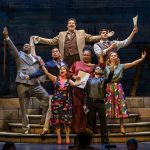
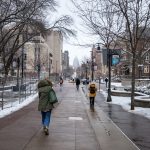



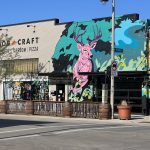
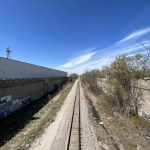
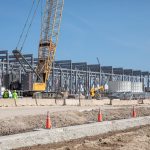


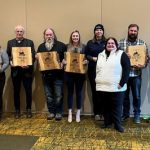


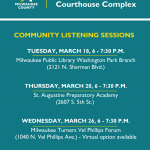



Years ago, Puerto Rico called itself America’s “Shining Star,” and its smaller neighbor the U.S. Virgin Islands license plates bore the slogan “America’s Paradise.” Those days are long gone, and, unfortunately, tourism will not bring them back, especially in Puerto Rico. Puerto Rico is and has been an American colony for well over a century, and, contrary to popular belief, its treatment by the colonial power has not been much better than that of others with shabby and exploitative records.
Its recent decline predates by at least a decade the devastation brought by the 2017 hurricanes. Since early in the new century, its economy has been in deep recession, an event driven by changes in U.S. tax law that led to a mass exodus of industries, especially pharmaceuticals, for greener, i.e., cheaper, pastures with better tax breaks. One result has been a massive flight of talent, especially young Puerto Ricans, who could see no future on an Island that they love.
The combination of economic decline, widespread corruption and government ineffectiveness have multiplied the impact of the catastrophic storms. Then, added to this tragedy, the storms came early in the tenure of Donald Trump and his nativist and racist administration. It should come as no surprise, given the treatment of California as a hostile country, that Trump and his helpers would seek to further victimize Puerto Rico, a task made simpler by the island’s governmental deficiencies. For people like them it is always easier to give a wounded dog a good kick than try to help it, especially if you are already a sadist and a bully. Just yesterday, Mr. Trump said, “the place is a mess, nothing works,” and they “only take from the USA,” as if they are not part of the USA. One of his helpers referred to Puerto Rico as “that country.”
With respect to Dr. Dassow’s focus on the environment, in addition to the immediate and dire need for massive assistance and debt forgiveness – neither of which appears forthcoming – there are the multiple threats posed by climate change, including the near certainty of future powerful storms. Unless something dramatic is done, Puerto Rico’s future – and that of its smaller colonial neighbor, the Virgin Islands – is likely to be one of ongoing decline and depopulation.
In addition, there is a near certainty that the Puerto Rican independence movement, usually hovering around 10% in polls, will become the dominant political movement in the near future, its symbol possibly being an extended middle finger pointed toward the mainland. It’s going to take a lot more than natural beauty and great hotels to change any of this. As a great thinker once said, “you can’t eat scenery.”